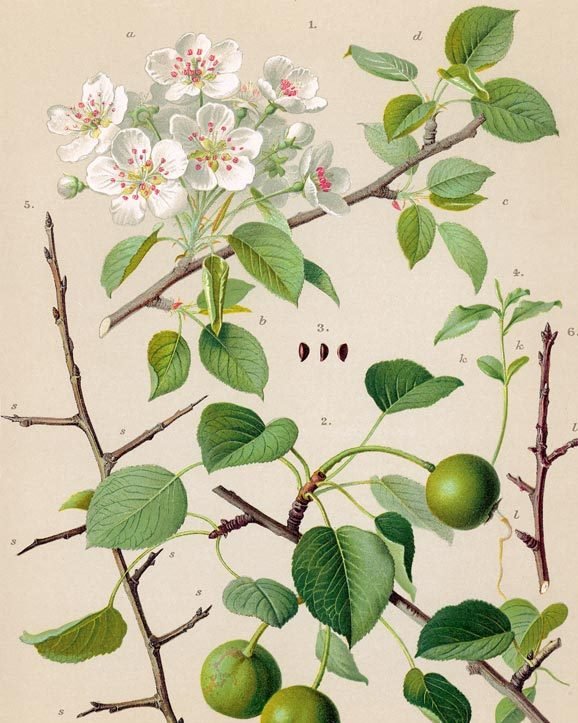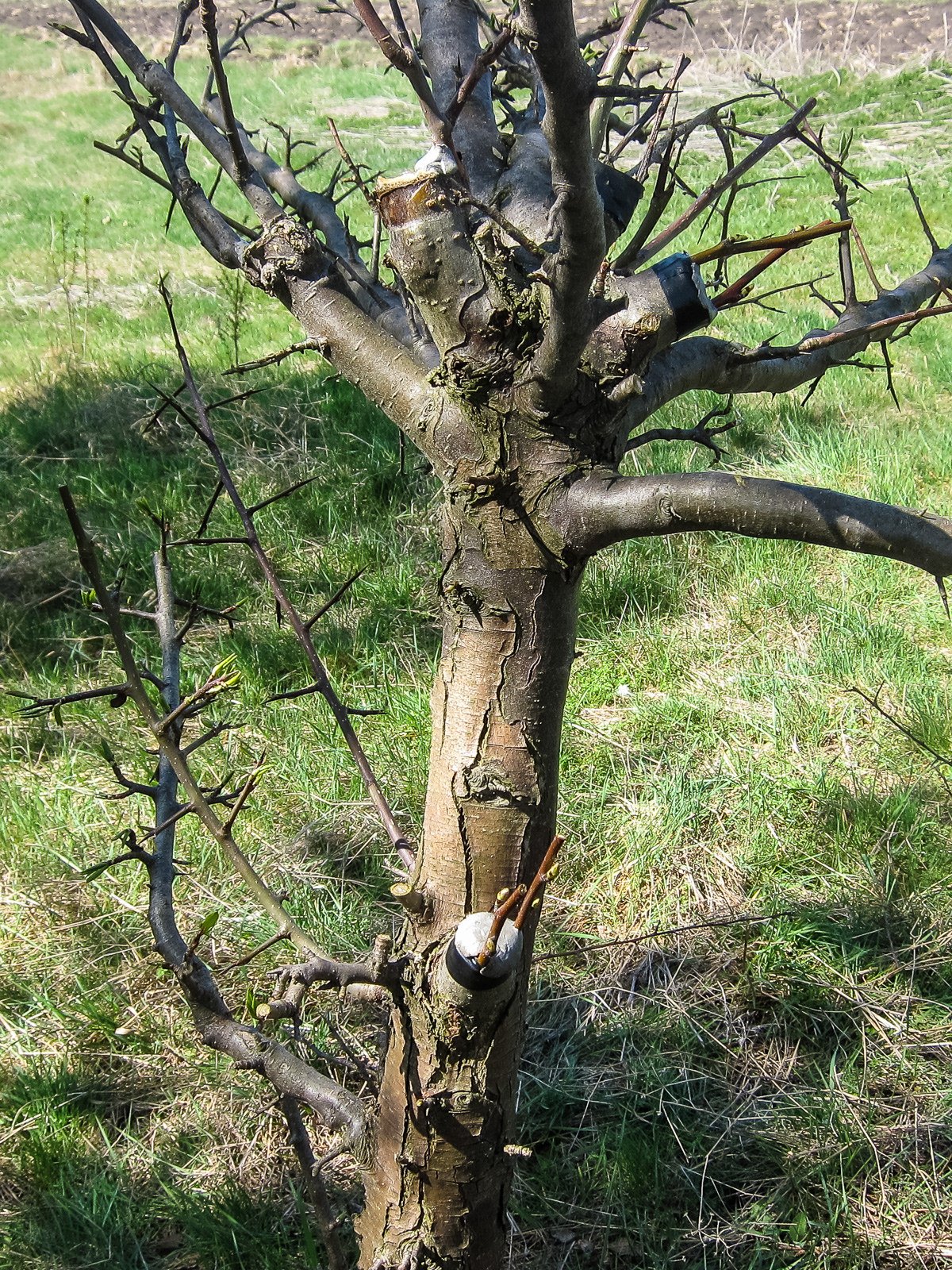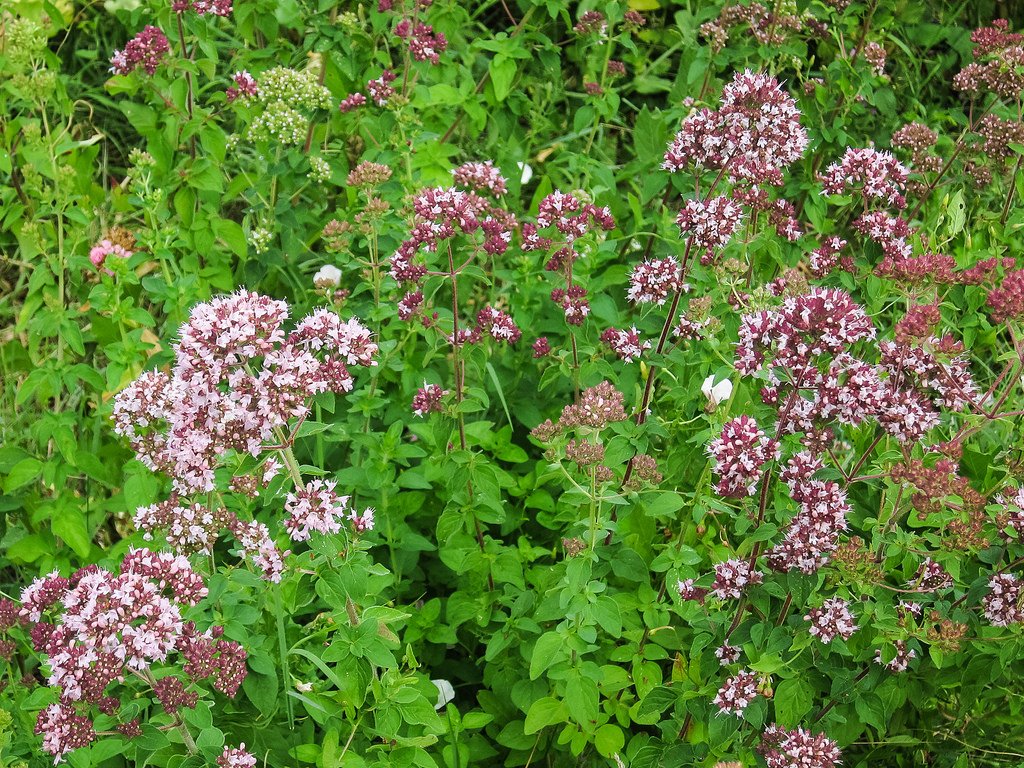Our future home sits in the corner of a small rural village plot of about 1/4 of an acre. The limited space is an extra stimulus to expand our area of influence outside our property. In the nearby area, there are plenty of lands, that are not in cultivation and are seldom used as pasture.
One of the ways to improve our immediate surroundings and provide the opportunity for extra yields not just for us, but for the whole community, is to plant and encourage the development of edible, medicinal and otherwise useful plants.
The simplest example is to plant your fruit seeds. It's something everybody can do!
Just gather all the cores / seeds / pits from apple, pear, cherry, peach, apricot, etc, and plant them somewhere. In a meadow. In a hedge. By a dirt road. In a windbreak or riparian buffer. In an abandoned city lot. Any place that provides a chance for a tree to grow undisturbed for a few years.
You don't need to dig a deep hole. It doesn't even need to be a hole, just two handfuls of earth to cover the seeds. You don't need to spread them around or space them properly. You can just dump the lot and scoop some soil on top and that's it. You're done! Next time just choose another location.
To a similar effect, you can put in the ground whole walnuts / chestnuts / hazelnuts with their shells on. They are hard, so again - no digging is involved. Just take a walk after an autumn rain and press the nut in the wet soil until its completely covered.
Lastly, a quicker and often more successful way is to graft a wild tree with a variety of your liking.
Here's a quick example. A wild pear, also knows as wild European pear, Pyrus pyraster. Note the thorns on this bad boy!

In the last few years, we've been selectively grafting wild pears with several pear and apple cultivars. Wild pears are well receptive of other pome fruits. We're also doing medlar on hawthorn. We're also putting as much walnuts we can in the ground.

This photo shows a wild pear, grafted with 5 different varieties of pear*. Note the actual thorns! They look vicious, but they also protect the tree from grazing animals. That is the reason we did not remove all of the original branches, as well as not wanting too big of a shock for the tree.
The grafting was done in stages, so upper left is a 3 year old graft, up and center - 2 y.o. and upper right and bottom center, the branches with the black tape are this years' grafting. They all took well, I'll post a photo next spring with the progress!
The common complaint is "grafting is complicated and only trained specialists can do it properly!" That's obviously not true, as I've managed to successfully graft dozens of scions with as little as 15 minutes of instruction, a simple pocket knife and a few tries.
I'll have another post on grafting some time next year, but for now just take my word for it - it can be easily done. Overcomplicating things never helped anybody, that's why I promote simple means and methods (cases in point: asparagus and rooting berry cuttings).
And here our story comes full circle. All those wild three we're grafting upon are born from seeds. Seeds someone planted - most often than not it's the animals that do our work for us.
A single mile of county road can hold more than 1000 fruit trees, if they're planted on both sides. Imagine all those trees laden with fruit, berry bushes as the understory, medicinal and culinary herbs...
Some other easy to do things in the same direction:
- Always have cuttings rooting and use all the extra ones for planting somewhere outside your property or garden layout plan.
- Always save the seeds of fruits that will grow well in your area and spread them. Even throwing your apple core in the field is better than putting it in your compost (gasp, I'm advocating littering... with seeds?).
- Super useful plants like willow, elderberry, filbert/hazel, mulberry, black locust and more will readily root from cuttings in the wild. Come autumn or early spring, cut a bunch of branches ff your favorite tree and start propagating it everywhere!
- If you can set aside a handful of nuts from your early yield or purchases, in 20 years the whole area will be covered in ideal food source and timber trees.
- When clearing the garden, always set aside plant material than can be used elsewhere. Example: clearing out our oregano patch by dividing and propagating it in the future orchard left dozens of small oregano plants that went into a fallow strip next to a agri-field nearby. This year they bloomed!

A journey of a thousand miles begins with a single step.
A forest of a thousand trees begins with a single seed.
* Sadly, the notebook containing the varieties list and sources, as well as other gardening notes got... erm... lost in an incident involving some sourdough, a folding chair and a box of crayons. So we'll have to wait and see what we actually grafted on it!
